
Having an email list holds significant value for a business as it provides a direct and personal channel of communication with your target audience.
Unlike social media or other platforms where your reach may be limited, an email list allows you to connect directly with individuals who have voluntarily expressed interest in your business. This direct communication enables you to deliver targeted marketing messages tailored to specific segments of your audience, increasing the likelihood of engagement and conversion. By consistently delivering valuable content, exclusive offers, and personalized insights through email, you can build trust, establish credibility, and nurture long-term relationships with your subscribers.
The Value of Your Email List
This relationship-building aspect fosters loyalty, leading to repeat business and customer advocacy. Additionally, email marketing has proven to be a highly effective channel for driving conversions and sales. Your email list comprises individuals who have already shown interest in your products or services, making them more receptive to your offers. With strategic email campaigns, you can promote new releases, showcase products, provide exclusive discounts, and encourage subscribers to take specific actions, resulting in increased sales and revenue. Moreover, email marketing is often considered a cost-effective channel compared to other advertising methods.
Building and maintaining an email list typically incurs lower costs, and with automation features, you can efficiently reach a large audience with personalized messages. Your email list also serves as a valuable source of traffic for your website, blog, or other online platforms.
By including relevant links and calls to action in your emails, you can drive subscribers to visit your digital properties, boosting engagement metrics and amplifying your online presence. Furthermore, an email list provides a ready-made audience for gathering feedback and insights. By leveraging surveys, polls, or simply asking for opinions, you can gain valuable information about your audience’s preferences and needs, enabling you to refine your offerings and improve your business strategy. Integrating your email list with advertising platforms also allows you to leverage retargeting and remarketing strategies, reinforcing your brand presence and driving conversions. In summary, an email list is a valuable asset that empowers you to engage with your audience directly, build relationships, drive conversions, and ultimately grow your business.
Now that you know just how important your email list is, it’s time to address one of the best ways to grow it: using lead magnets. But, first things first.
What is a Lead Magnet?
A lead magnet is a marketing term that refers to an incentive or valuable content offering provided by a business or marketer in exchange for a prospect’s contact information, usually their email address. It is designed to attract potential customers and capture their details, thereby converting them into leads for future marketing and sales efforts.
The purpose of a lead magnet is to offer something of value to your target audience that solves a specific problem or fulfills a particular need. By offering this valuable resource, you can entice potential customers to provide their contact information willingly. Lead magnets can take various forms, including but not limited to:
Ebooks or Whitepapers
Comprehensive guides, reports, or research papers that provide in-depth information on a specific topic of interest to your audience.
Checklists or Cheat Sheets
Quick-reference documents that outline steps, tips, or shortcuts related to a particular task or process.
Templates or Worksheets
Pre-designed forms, spreadsheets, or templates that help users accomplish a specific task or simplify a process.
Video Tutorials or Webinars
Recorded or live presentations that provide valuable insights, demonstrations, or training on a particular subject.
Case Studies or Success Stories
Real-life examples or stories that showcase how your product or service has benefited previous customers or clients.
Free Trials or Samples
Offering a limited version of your product or a sample of your service to give potential customers a taste of what you offer.
Quizzes or Assessments
Interactive tools that provide personalized recommendations, assessments, or evaluations based on users’ responses.
The key to an effective lead magnet is to ensure it aligns with your target audience’s interests and needs while providing genuine value. It should be relevant to your business and positioned as a solution to a problem or a way to achieve a desired outcome. By offering a compelling lead magnet, you can attract potential customers, build trust, and establish a foundation for further engagement and nurturing through email marketing or other channels.
Is a Landing Page Different Than a Lead Magnet?
Yes, landing pages and lead magnets are different components of a marketing strategy, but they often work together to drive lead generation and conversions.
A landing page is a web page designed for a particular marketing campaign or objective. It is where visitors “land” after clicking on a link in an advertisement, search engine results, social media post, or email. The primary purpose of a landing page is to convert visitors into leads or customers by encouraging them to take a specific action, such as filling out a form, making a purchase, or subscribing to a service.
On the other hand, a lead magnet is a valuable incentive or content offering that is used to entice visitors to provide their contact information, usually in exchange for the lead magnet itself. The lead magnet is typically promoted on a landing page as a compelling offer, encouraging visitors to provide their email addresses or other details to gain access to the valuable resource.
In essence, a lead magnet serves as the “bait” or incentive to capture a visitor’s information, while a landing page is the dedicated web page where the lead magnet is showcased, and the visitor is prompted to take action. The lead magnet can be a key element within a landing page, serving as the focal point of the offer and encouraging conversions.
When effectively combined, a well-designed landing page showcases the value and benefits of the lead magnet, persuading visitors to provide their contact information. Once a visitor becomes a lead by submitting the form on the landing page, their information can be used for future marketing and nurturing efforts.
It’s important to note that while lead magnets are commonly used on landing pages, they can also be utilized in other marketing channels, such as pop-up forms on websites, email campaigns, social media promotions, or even offline events. The primary objective remains the same: to attract potential customers and capture their contact information to initiate further engagement and build a relationship.
How to Use Benchmark Email’s Landing Page Builder to Incentivize a Lead Magnet
Benchmark Email makes it super easy to grow your email list and incentivize people to download your lead magnet. Here’s a step-by-step process for creating a landing page with a Benchmark Email account.
1. Sign in to Your Benchmark Email Account
If you don’t have one, create a new account on their website. Once you’re logged in, navigate to the landing page builder.
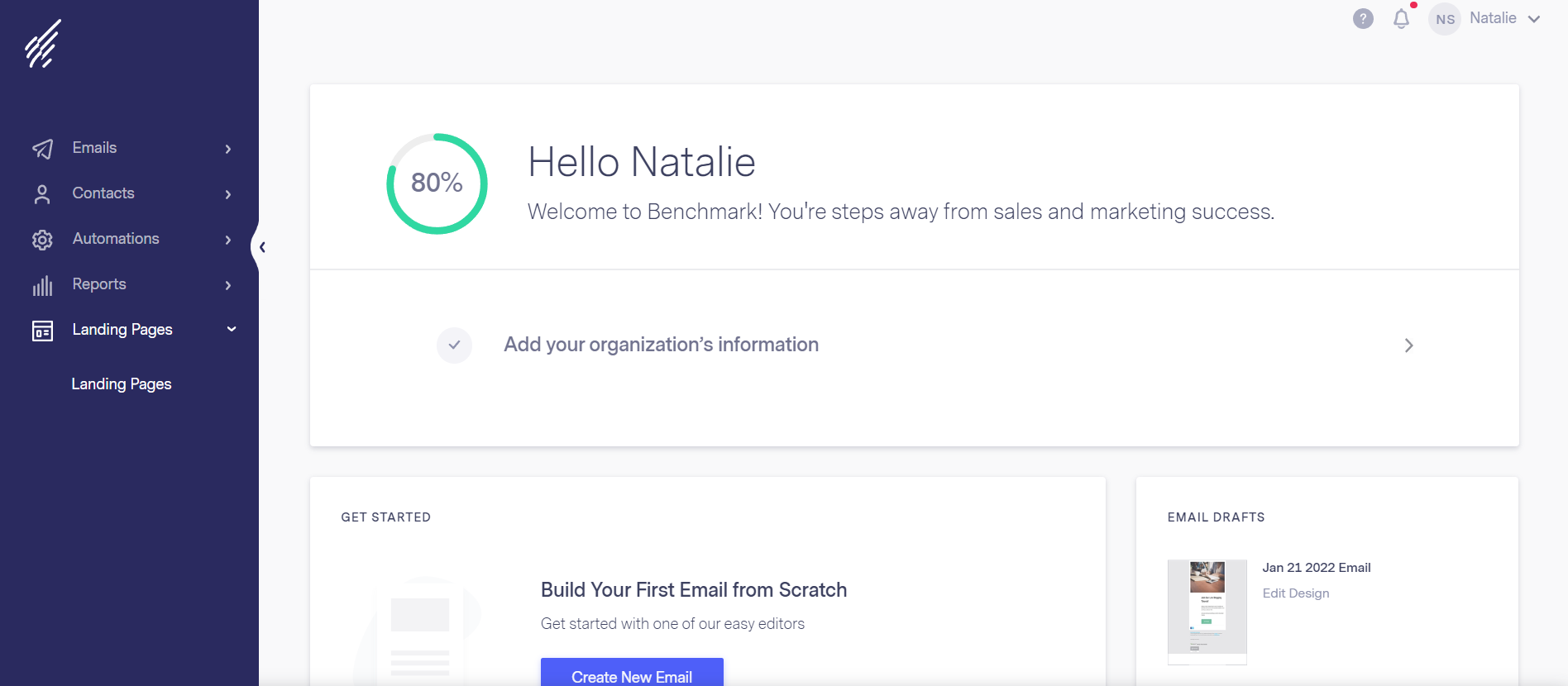
2. Create Your Landing Page
Create a new landing page and name it.
3. Design Your Landing Page
Click on “Design Landing Page” and select your desired layout. Or, you can choose from Benchmark Email’s templates.
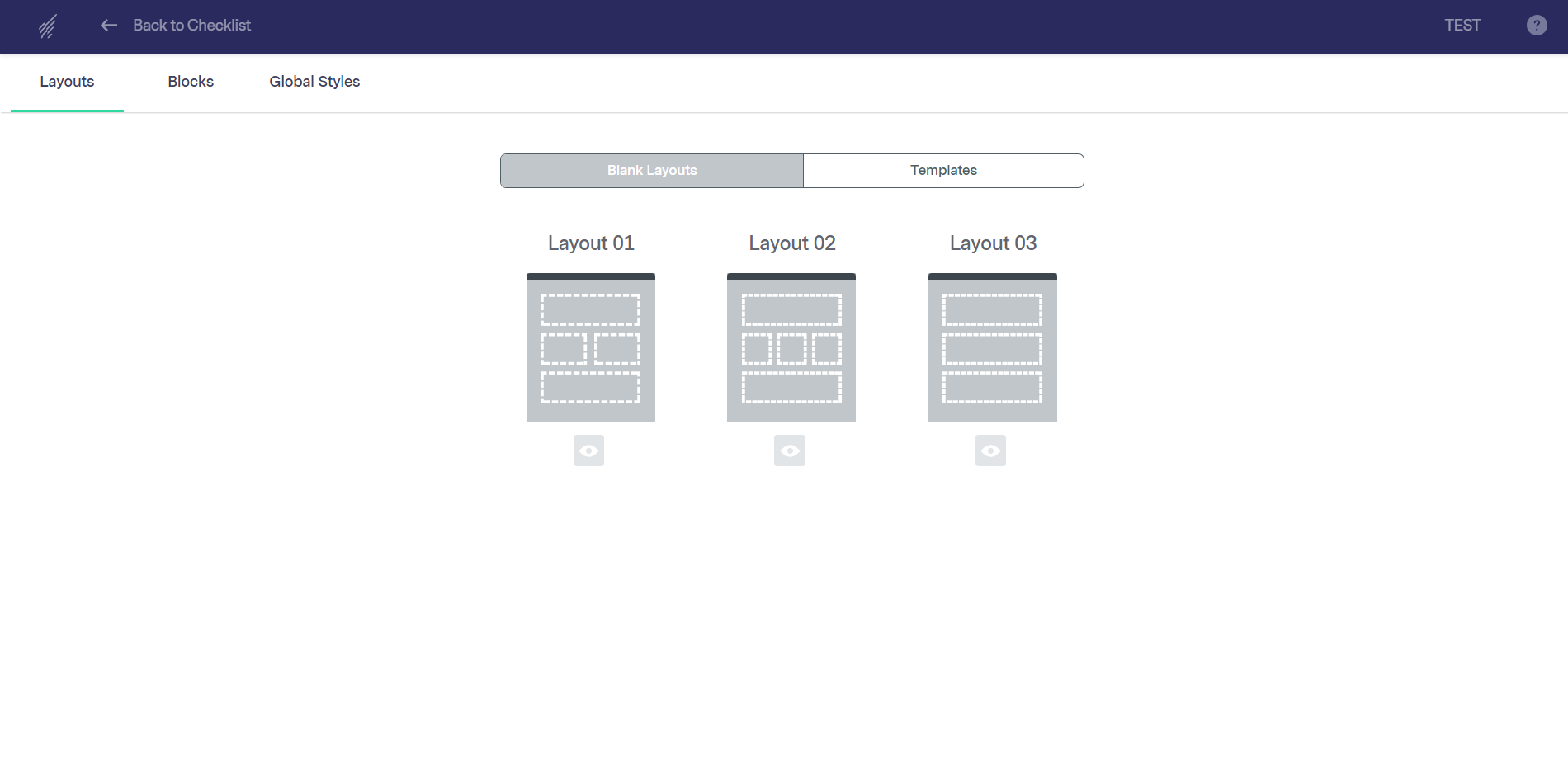
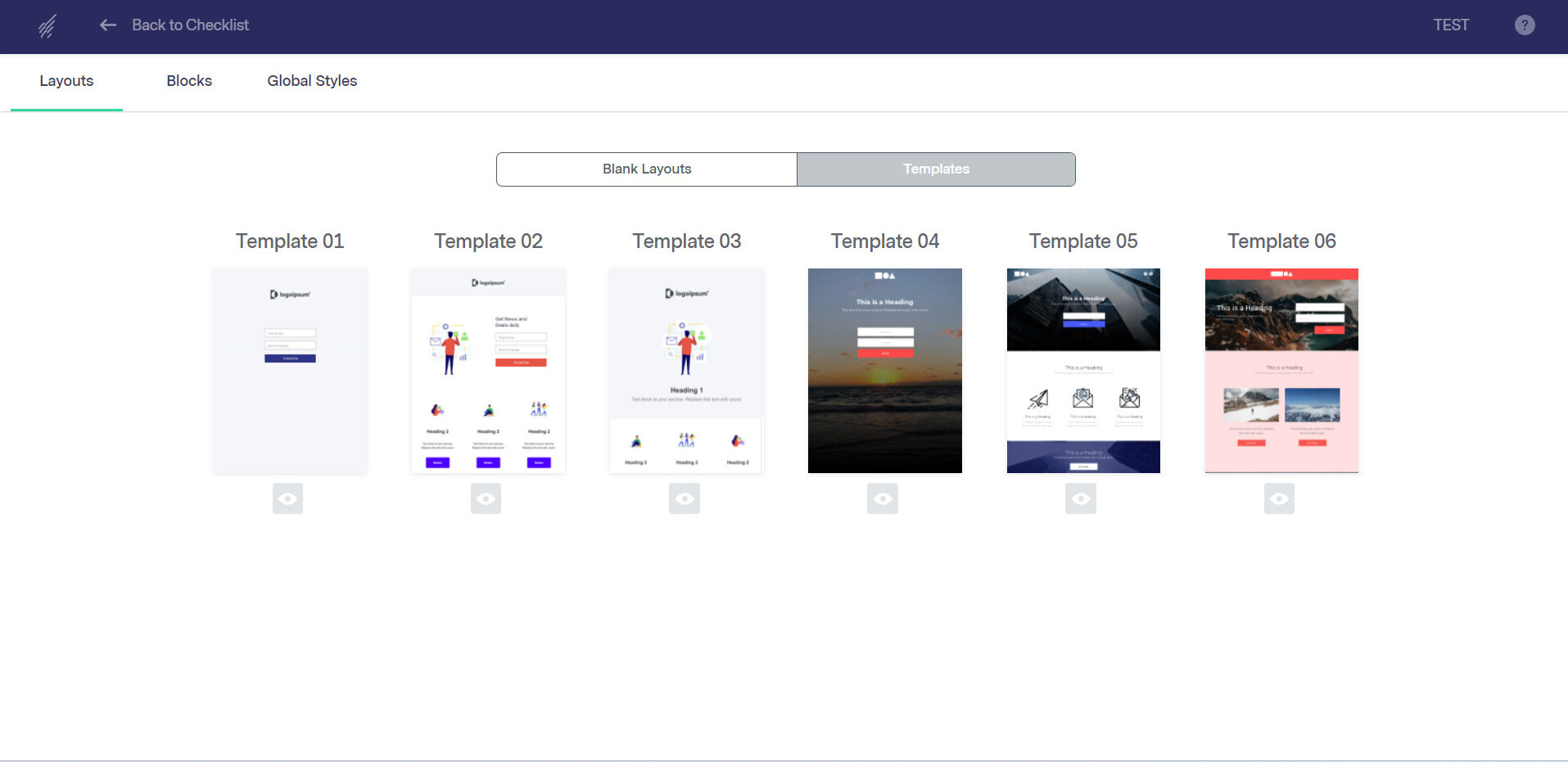
3. Customize the Template
Modify the text, images, colors, and select how many columns you want on the page. Adjust any other elements to match your branding and optimize the page’s appearance. Ensure the design is visually appealing and encourages visitors to take action.
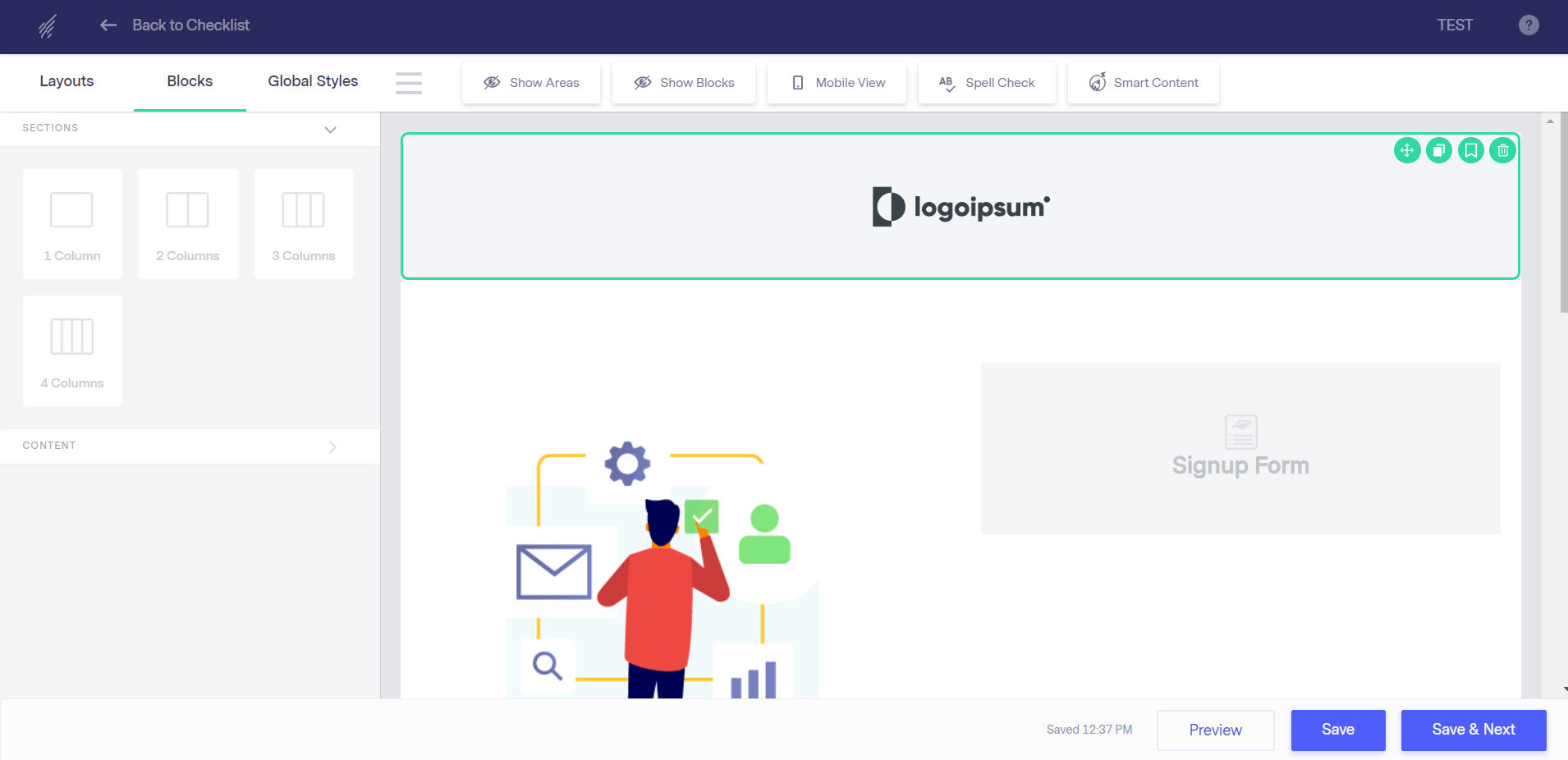
If you need help putting together some text for your landing page, make sure you check out the Smart Content feature. All you have to do is provide a prompt about your campaign and Smart Content will generate engaging copy for you to add to the page.
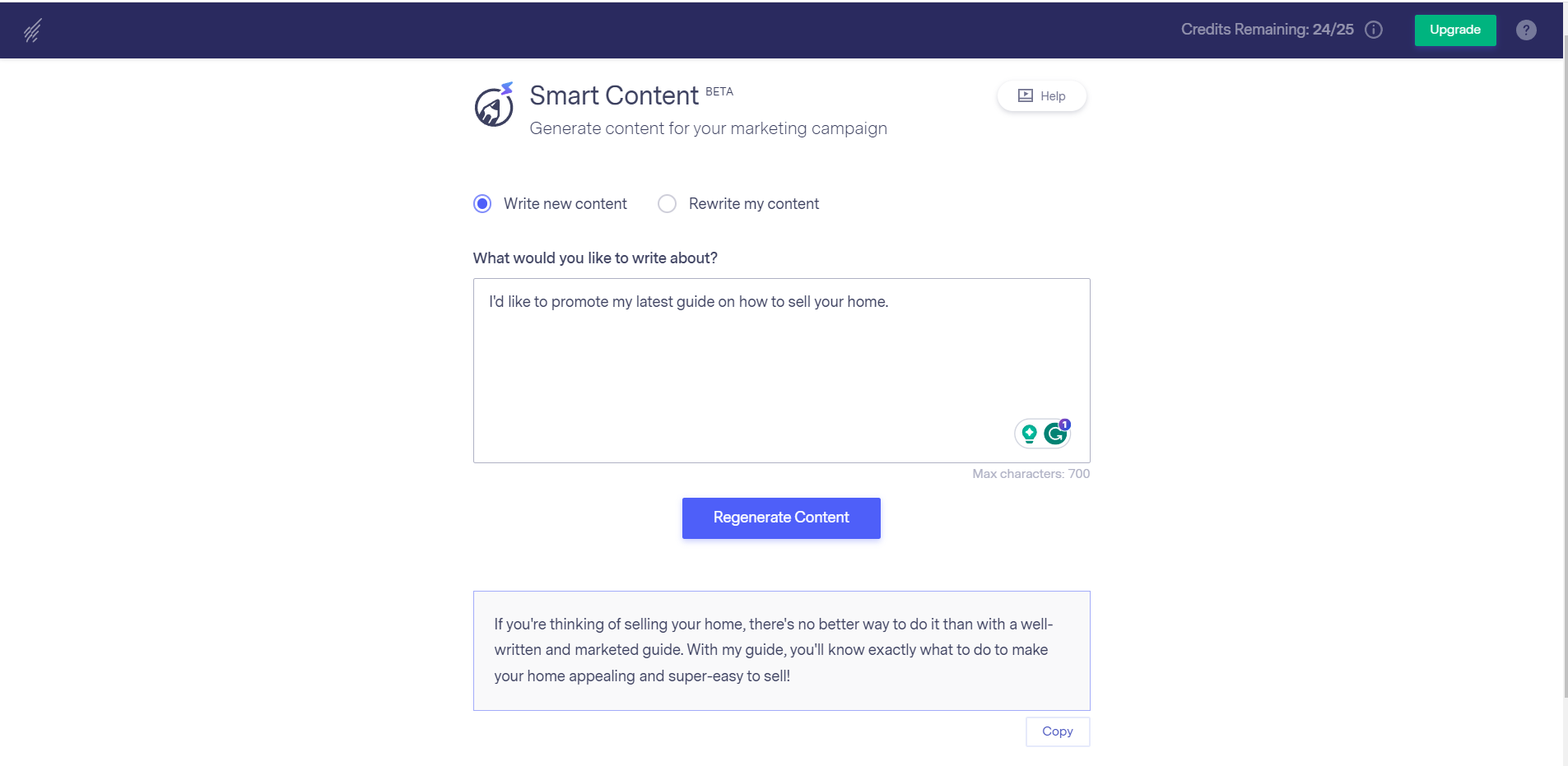
4. Add a Lead Capture Form
To collect contact information from your visitors, drag and drop a form element onto the page. Customize the form fields according to the information you want to gather, such as name, email address, and any additional details you require.
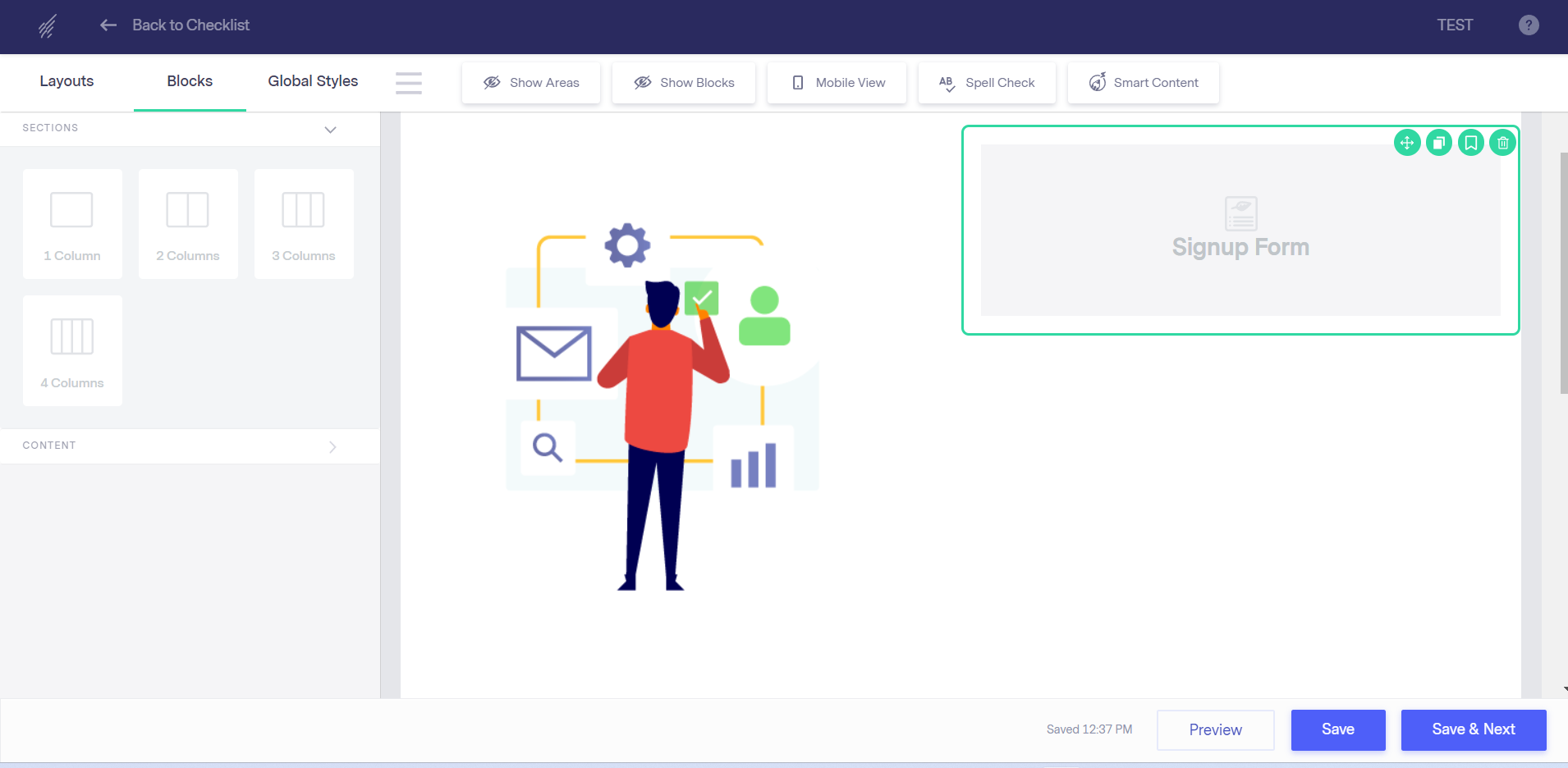
Once the page looks the way you want it to, click “Save & Next.”
5. Complete the Other Elements
Fill out your page info, which is the page title and description, as well as your conversion goals (so you can track success) and your landing page URL. If you plan to track using Google Analytics, make sure you add a tracking code at the bottom.
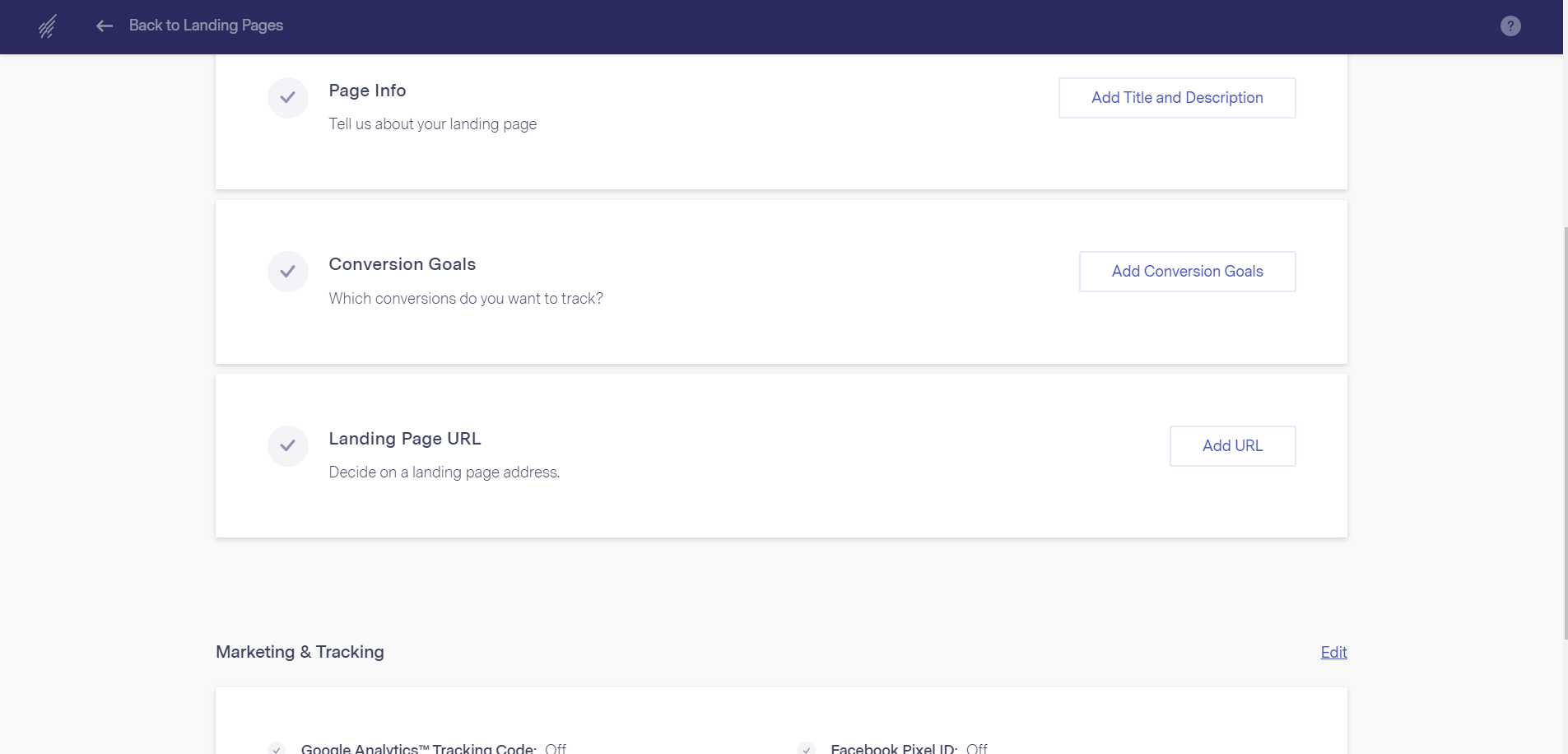
6. Publish Your Page
Hit “Publish.”
7. Email Your New Leads
By using Benchmark Email, you can ensure that the captured leads are seamlessly added to your contact list or a specific segment.
Once visitors submit their information, you can automatically send them a thank-you message or provide them with the lead magnet content. In Benchmark Email, you can typically set up an autoresponder email using our automation or email campaign features.
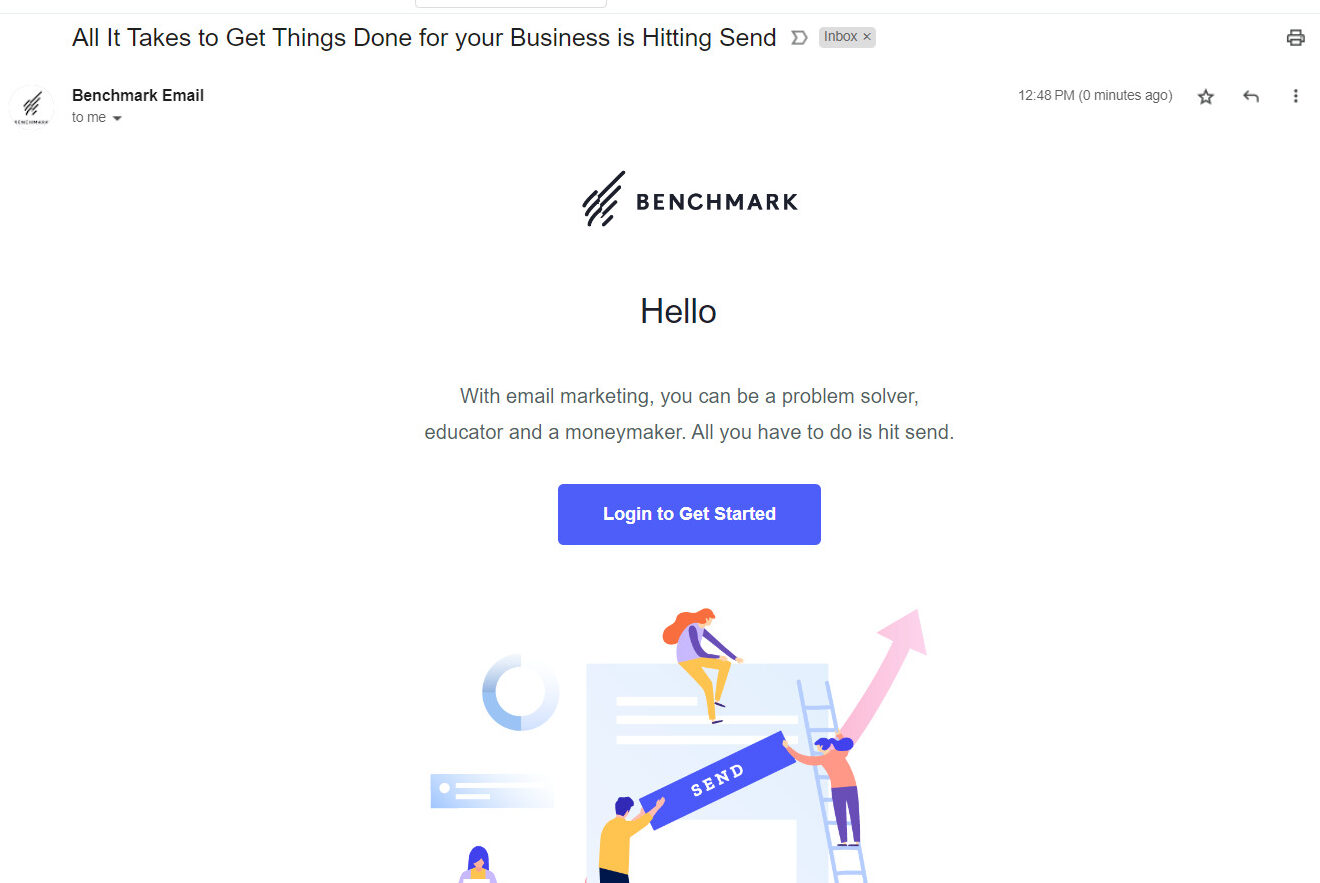
8. Promote Your Landing Page
Make sure you share your landing page through various channels, such as social media, email campaigns, or paid advertising. Promote the value of your lead magnet and encourage visitors to engage with your page. This will get more eyes on your site and help you grow your email list.
Tips for Creating a Landing Page that Grows Your Email List
Creating an effective landing page that helps grow a business’s email list requires careful planning and implementation. Here are some tips to consider when building a landing page for email list growth:
Clear and Compelling Headline
Craft a concise and attention-grabbing headline that clearly communicates the value proposition of your offer. Make it compelling and relevant to your target audience’s needs or desires.
Concise and Persuasive Copy
Keep the copy on your landing page concise, focusing on the key benefits of your offer. Use persuasive language and compelling arguments to convince visitors to take action and provide their email addresses.
Strong Call-to-Action (CTA)
Your landing page should have a prominent and compelling CTA button that stands out. Use action-oriented language to encourage visitors to click and submit their information. For example, use phrases like “Get Your Free Guide” or “Join Our Exclusive Newsletter.”
Minimalist Design
Keep the design of your landing page clean, uncluttered, and visually appealing. Use white space effectively to draw attention to important elements and minimize distractions. Ensure that the page is easy to navigate and scroll through.
Highlight Benefits
Clearly communicate the benefits and value of your lead magnet or email subscription. Explain how it will solve a problem, provide valuable information, or enhance the visitor’s life or business.
Use Visuals
Include relevant and high-quality visuals on your landing page to support your message and enhance the overall aesthetics. Use images, icons, or videos that resonate with your target audience and reinforce the value of your offer.
Social Proof
Incorporate testimonials, reviews, or social proof elements on your landing page to build trust and credibility. Highlight positive feedback from existing subscribers or customers to demonstrate the value others have received.
Mobile Optimization
Ensure that your landing page is mobile-responsive and looks great on various devices and screen sizes. With the increasing use of mobile devices, it’s crucial to provide a seamless experience for mobile users. All of Benchmark Email’s landing pages are mobile-optimized.
Form Optimization
Keep your website form fields minimal and only ask for the essential information you need. Long and complicated forms can deter visitors from completing the process. Consider using single-field forms or progressive profiling to collect additional data over time.
Privacy and Trust
Assure visitors that their information is safe and will be treated with respect. Display trust indicators such as security badges, privacy policy links, or any relevant certifications to instill confidence. And make sure your forms state that those who fill them out will automatically be enrolled in your email marketing.
A/B Testing
Continuously test and optimize your landing page elements, including headlines, copy, CTA button design, form placement, or color schemes. Conduct A/B tests to compare different variations and identify which elements yield better conversion rates.
Follow-Up Automation
Set up an automated email series to nurture the leads you generate through the landing page. Deliver the promised lead magnet, provide additional value, and gradually guide subscribers toward becoming customers.
Remember, the effectiveness of your landing page will depend on your understanding of your target audience and how well you align your offer with their needs and desires. Regularly track and analyze the performance of your landing page using analytics tools to make data-driven improvements over time.
Interested in using Benchmark Email’s tools to create a landing page for your lead magnet? Sign up for a free account and get started today!



